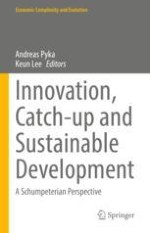2021 | OriginalPaper | Buchkapitel
On application of the precautionary principle to ban GMVs: an evolutionary model of new seed technology integration
verfasst von : Shyama V. Ramani, Mhamed-Ali El-Aroui
Erschienen in: Innovation, Catch-up and Sustainable Development
Aktivieren Sie unsere intelligente Suche, um passende Fachinhalte oder Patente zu finden.
Wählen Sie Textabschnitte aus um mit Künstlicher Intelligenz passenden Patente zu finden. powered by
Markieren Sie Textabschnitte, um KI-gestützt weitere passende Inhalte zu finden. powered by
